- Home
- Blake Banner
Jack in the Box Page 14
Jack in the Box Read online
Page 14
She made her way back to the unmarked Dodge, climbed behind the wheel and, as the light started to fade in the city, drove back north along the banks of the Hudson. All the way she kept her mind focused and her emotions tightly battened down. Grief, despair and fear cost lives. A clear, focused mind might be the only thing standing between Stone and death.
A white van.
Would a killer as methodical and systematic as this one have kept his van for five years? It was unlikely. What was not unlikely was that it was a taunt. A mockery. He, or she, had wanted the van to be seen. That was why he had parked it outside the school, where he could be certain it would be seen. He wanted it to be seen.
He or she.
Why? Why would he want the van to be seen? She stopped and corrected herself. “Stone would tell you that question is too open, Carmencita. Rephrase it. What would make him want the van to be seen?”
There was the taunt and the mockery, but this killer was smarter than that. This killer took out Jack Connors five years ago and had not been caught since. No, there was something more to it than taunting and mockery.
“Stone would say,” she said aloud, “if he wanted the van to be seen, it was because he wanted to draw attention to it. What would make him want to draw attention to the van? Think, Carmen! Think!”
Her phone rang.
“Dehan.”
“Detective Dehan, it’s Consuelo. You wanted me to look into vehicles…”
“Yeah. What have you got?”
“Of the list of people and companies you gave me, Shaw Line Security have a fleet of six white Savannahs. They are of the passenger type. Do you want me to arrange to go and see them?”
“No, not yet. Good work. Anybody else?”
“Yes, it’s a bit odd. I mean, I know it’s a popular van but, Connors Communication own two and Alornerk Smith, in Boston, he also has one. Statistically, I think it’s unlikely that so many of the people on your list would own the same vehicle.”
“I agree. Get me the license plates on all of them. Then I want each one of those vans accounted for. Inform the inspector.”
“I’m on it.”
She hung up and pounded the wheel with her fist three times. Then she called ahead to have Penelope taken up to the interrogation room again.
Ten minutes later, she screeched to a halt outside the station, pushed through the door and sprinted up the steps. She met Mo coming down and for once in his life, he looked sincere.
“Carmen, I heard about Stone, I’m sorry…”
“Save it for the funeral, Mo.”
She left him staring after her and ran the rest of the way to the top floor where she burst into the interrogation room and bent over the table, staring down into Penelope’s face.
“The van you saw, the one you thought was stalking you, was it a passenger vehicle?”
Penelope goggled. “What?”
“Did it have windows in the back? Yes or no?”
“No!”
“Are you sure?”
“Yes!”
“God damn it!” She turned and wrenched open the door again. Over her shoulder she snarled, “Get out of here! Go home!”
“What?”
“Get out! Go!”
From there she crossed to the inspector’s office, hammered once and went in.
“Carmen.”
“Sir. I am letting Penelope go. Stone was right not to bring her in. She was stalked by a white van just before Jack was killed. The white van that stalked her had no windows in the back. This van has windows. It was parked outside just about the only place in that neighborhood where it was sure to be seen by witnesses. That means Stone’s abductor wanted the van to be seen. He wanted the van to be seen because he wanted us to connect it with Grant Shaw and the original white van Penelope saw five years ago. Shaw uses a fleet of white Savannahs. So it could not have been Shaw or Penelope. This guy—this person—is very, very clever at deflecting suspicion and staying out of the picture.”
“Consuelo told me about the vans. I’ve sent a car to check on the vehicles and establish their whereabouts this morning. What about the other two?”
“Alornerk and Jack’s own company, Connors Communication. They own three vans between them, all fitting the description by the witness. Alornerk certainly had motive to kill Jack. I don’t see him abducting Stone and setting up this elaborate show, but he’s a mathematician right? And an academic. They’re all crazy. I need to find out where he was today. Maybe we can call Boston PD and have them send somebody over to ask him. Come to think of it, he should have come in today to make a statement.”
“Interesting.”
“Yeah. Meantime, that leaves two vans belonging to Jack’s own company, and I have to tell you sir, that, to me, stinks like shit soup. Excuse me.”
“You’d better explain.”
She shook her head. “Right back to first principles, chief: who benefited from his death? Helena. And not only did she benefit, he was screwing another chick who was younger and better looking. OK, so Helena was also screwing another guy. But she wasn’t in love with him. All along, the man she loved was Jack. And Jack barely knew she existed and treated her like shit.”
He frowned. “The person in the CCTV footage is a man.”
“And the one in the wheelchair is an old woman. And yet.” She shook her head again. “That is not hard to arrange, sir, and besides, she may have an accomplice, a younger man to do the heavy lifting. She is an attractive, very rich woman with a lot of admirers and followers. It would not be hard for her…”
She frowned and became momentarily distracted. The inspector was nodding. “Indeed—Alornerk himself! Well, we should know shortly if Connors Communications’ vans were used today, and if so, by whom. What is it, Carmen? Something wrong?”
“I just remembered…”
There was a tap at the door and the inspector snapped “Come!”
A uniform poked his head in and said, “Detective Dehan, you have a UPS delivery. Maria signed for it and it’s on your desk.”
“Yeah, thanks…”
She stared at the inspector. He stared back.
In a strange trance, she moved out of the office, hearing only the blood in her ears. She moved down the stairs and pushed into the detectives room. Everybody was staring at her, though she was not aware of them. She was aware only of the carton standing on her desk, eighteen inches cubed, and Stone’s empty chair beyond it.
SIXTEEN
The inspector pushed past her in a rush.
“Carmen, let me open it. Somebody take Carmen away from here! For God’s sake, get her out of here!”
Mo stepped toward her, Consuelo, who had been working at Dehan’s desk, rose and moved toward her, arms stretched out.
Dehan snarled, “Stay away from me! Don’t touch that box!”
She reached in her jeans and pulled out a blade. She advanced on the box and, with her hands shaking badly, she cut the tape and gripped the cardboard flaps. The detectives had gathered around her. The inspector stepped forward, reaching for her. “Carmen, no…”
“Stay away!”
Her face was pale and drawn, and with sudden vicious violence she ripped open the box, stared inside and screamed. She staggered back a step, covering her face and fell into her chair, still screaming. Then she was on her feet, pounding the desk with her fist. She kicked her chair and sent it crashing against the wall. “Mother fucker!”
She turned and stared at the rows of astonished faces watching her. “What are you all staring at? He’s not in there! He hasn’t had his fucking head cut off!”
Mo was the first to move, then the small crowd began to disperse. The deputy inspector stepped toward her and held her shoulders. She stared into his face, her own a sickly gray color, biting back the sobs, blinking away the tears, her hands trembling.
“Carmen, put the knife away.”
She folded it and put it in her pocket.
“Sit down. Somebody, Consuelo,
get her a coffee. Now just take a moment to breathe and get a grip. It was not him, and that is a good thing, right?”
“Don’t even dream about taking me off this case, sir.”
“It’s OK, just take it easy. Nobody’s taking you off anything. But we need to get this stuff to the lab.”
“Not yet.” She stood, took some latex gloves from her jacket pocket and pulled them on. “There’s a note, and I saw a photograph.”
She reached in the box, which was almost empty, and extracted an envelope and a photograph of a dense woodland. She examined the photograph a moment and handed it to the inspector. Then she opened the envelope and read aloud in a steady voice.
“‘No head for you today, Detective Dehan. Your husband is intact, but buried in a shallow grave. I guess I could have googled it, but I just didn’t have the interest: how long can a person survive buried alive?’” She paused, hesitated, then continued. “‘Do I seem cruel? Yet I am trying to redeem myself. At least I spared him the cheese cutter and gave him a chance. Hurry now! You might just find him in time.’”
The room seemed to rock under her feet. She reached out to the deputy inspector with fumbling fingers and took back the photograph. It was a glade in a forest. It meant nothing to her. She forced herself to focus. The ground was dark and mulchy: last fall’s leaves rotted into the soil. A large tree stood in the center of the picture, perhaps an oak, maybe fifteen or twenty feet from the camera, with large ferns on the right and more trees she could not identify. To the left, her left, a space between trees showed a patch of water. And in the foreground, near the foot of the oak, a mound where the earth had been disturbed.
She handed it back to the inspector. “We need to have this copied to all the sheriffs’ departments, Jersey to Maine, parks authorities, every cop in every PD on the East Coast. Somebody knows where this is.”
He took the picture. “Consuelo, see to it. Copy it to every cell phone in the 43rd, then get it out to every precinct in New York state, copy it to the sheriffs’ departments, park authorities—everyone and anyone you can think of. There is an NYPD detective buried alive at this spot, we need to know where it is now!”
He turned back to Dehan. She was already talking over him. “He’s had him maybe six hours. Allow for the time to dig the ground, put him in the hole, drive back, prepare the package and have it delivered. That limits him to an area of less than three hours from the Upper West Side.”
“Much less, Carmen, two to two and a half maximum.”
“OK, now, much of that is through the city where his speed is going to be limited to twenty or thirty miles per hour…”
“Until he hits the freeway, when his speed will increase to double that, assuming he sticks to the speed limit.”
“So we are looking in a circumference of about a hundred miles.”
“That is millions of acres of woodland…”
“Madison is a hundred miles away. The other bodies were found on the route to Madison…”
“Penelope again? Carmen…”
She shook her head. “No. It’s a red herring. Why didn’t he decapitate Stone? That box was intended for his head, but it wasn’t in it.”
He shook his head, frowning. “I don’t know…”
“What stopped him from cutting off his head? He told us what. He told us he was seeking redemption. It’s a long shot, sir, but if he abducted Stone intending to cut off his head, but then refrained from decapitating him, that has to mean that something during that brief period of five or six hours made him change his mind, right? What happened during that time? We don’t know, perhaps they talked, perhaps Stone got inside his head.”
“Perhaps...”
“Whatever it was, it means that the decision to bury him in a shallow grave instead of decapitating him came later. Which means he had less time to drive out and back, which places the woodland closer to home.”
“All right, that’s good.”
“Now, dense woodland within New York is mainly in the Bronx…”
Mo had gotten up from his desk and approached, listening to her. A couple of other detectives had stopped what they were doing to listen. She went on. “What have we got? We’ve got Pugsley Creek Park, Soundview Park…”
Mo snapped his fingers and pointed at her. “The Botanical Gardens! The Thain Family Forest. You got a river in that picture, the Bronx river flows right through it.”
“Yes!”
The inspector turned to the room and started hollering, “All right! I want every available officer in the briefing room in two minutes! Drop whatever you are doing! Go! We are organizing search parties! In the briefing room now!”
There was a flurry of activity as uniforms and plain clothes alike converged on the briefing room. Dehan did not join them. Her mind was racing and she was staring at her laptop, scouring a map of the Botanical Gardens, trying to put herself in the killer’s mind, asking herself not where she would bury a body, but where she would bury a body if she was this particular killer.
She found there were not that many places you could enter the park in seclusion. Logic dictated Stone was either conscious or unconscious, dead or alive. If he was unconscious or dead, he would have to be transported in some way. If he was conscious, he would probably be made to walk, with a gun in his back. Either way, most entrances to the park were on main roads with lots of public access, and the risk of discovery was high. The only access point she could find that was more or less remote was southbound on the Bronx River Parkway, just after the Williams Bridge, where a short road led down from the bridge to feed into the highway. There, there was a small patch of wasteland by the railway, at the very tip of the Botanical Gardens. There you could take in your van, park it in the cover of the trees and either walk your victim or push them in a wheelchair, down the secluded path where few visitors to the park would go, then veer off the track and in among the trees. And there, right there, was the river.
She grabbed her jacket and ran. She paused just a moment at the front desk.
“Maria, tell the chief I went to the north end of the Botanical Gardens.”
“Find him.”
“You bet your sweet ass I will!”
It was a short drive. She picked up the Bronx River Parkway on Storey Avenue, set the siren howling and hit a hundred going north. In less than five minutes, she was slowing to come off onto the Williams Bridge. There she did a ‘U’ and came down off the bridge onto the slip road, where she found the patch of wasteland and pulled off.
Late afternoon was shifting to evening. The shadows of the trees were long and dense in the copper light. She grabbed the flashlight from the trunk and set off at a steady jog along the path, keeping the river on her right and scanning the clearings for anything that was reminiscent of the photograph.
Soon the river began to recede and she was forced to slow to a walk and move in among the woodland, into the shadows and the dark, trying to keep the river in view. Darkness closed in. The hum and hiss of the traffic faded until the only sound was the croak of the frogs and the lap of the water, and her own feet treading on the dead leaves and the dry twigs underfoot. The failing light and the heavy shadows made it increasingly hard to identify the clearing, but in her mind, the large oak tree was vivid and she knew that when she saw it, she would know it.
But she didn’t see it. She pressed on, going ever deeper into the forest, following the course of the river, keeping the water at roughly the distance it had been in the picture. But as she moved on, the ferns grew more dense, the trees more massive and more thickly grouped, the terrain ever harder to negotiate, until eventually she was trudging ankle deep through mud and sludge, clambering over giant roots, unable to see more than a few yards ahead of herself. Finally she stopped and realized that she was completely lost, and it was totally dark.
She played the flashlight around the trees. Even if she had seen the tree, now she doubted she would recognize it. A twist of despair and panic gripped her gut and a wave of nause
a washed over her. She should have brought a team with her. She should have waited for the inspector to finish his briefing. But the panic, the urgency to find him had blinded her.
She reached for her phone, intending to call for backup, but a noise made her stop. An animal perhaps, a small, feral predator seeking food. She stood motionless, listening, trying to rein in her imagination. Had she been led here? Had she been drawn here so the killer could get her too? It was irrational. How could the killer have known she would come without backup? How could he have known she would come at all? How could he, or she, know that Dehan would be there alone?
The noise came again: a large body pushing through undergrowth. A crack of a dry branch under a heavy foot. Then silence.
Dehan killed the flashlight, pulled her piece and backed away from the noise into the cover of a large tree. Behind her, to her right, she could hear the lap and splash of the river. On her left were tall, thick ferns. Ahead, just beyond the clearing, there was a gap in the trees and what looked like a narrow footpath. She crouched down and leveled her gun at the gap, and waited.
A shadow, darker than the shadows around it, shifted near the footpath. She narrowed her eyes, unsure if it had been a moving branch or a body. Another shift and then a pale reflection, like skin, a face half seen among the shadows of the leaves.
She took aim and shouted, “NYPD! Identify yourself! Step into the clearing!”
Nothing happened for a moment. Then there was another rustle, as of a body moving among branches and foliage. The pallid face became clearer, dancing disembodied among the shadows.
She shouted again. “This is the New York Police Department! Identify yourself!” Another step forward.
The face drew closer, staring blindly ahead, as though suspended from the branches above. It stopped. Sick panic gripped her. It was impossible in the darkness of the forest to make out any body beneath the head. It seemed to hang, gaping in the air. A voice, a hoarse whisper, filtered through the undergrowth above the ripple of the stream and the croak of the frogs. “Dehan? Is that you? Did you come…?”
She switched on the flashlight and stood, shouting, “Identify yourself!”

 Verdugo Dawn
Verdugo Dawn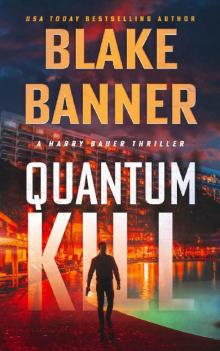 Quantum Kill (Cobra Book 4)
Quantum Kill (Cobra Book 4)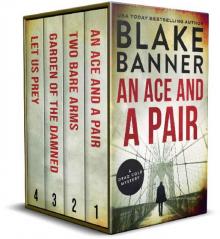 Dead Cold Mysteries Box Set #1: Books 1-4 (A Dead Cold Box Set)
Dead Cold Mysteries Box Set #1: Books 1-4 (A Dead Cold Box Set)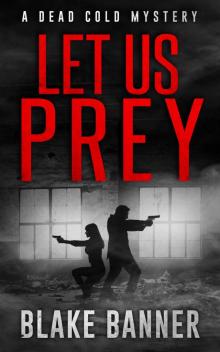 Let Us Prey
Let Us Prey Dead Cold Mysteries Box Set #4: Books 13-16 (A Dead Cold Box Set)
Dead Cold Mysteries Box Set #4: Books 13-16 (A Dead Cold Box Set) Dead of Night
Dead of Night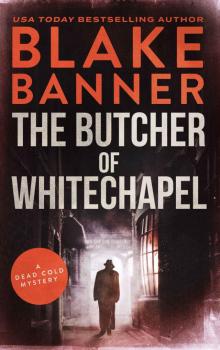 The Butcher of Whitechapel: Dead Cold Mystery 12
The Butcher of Whitechapel: Dead Cold Mystery 12 Omega Series Box Set 2
Omega Series Box Set 2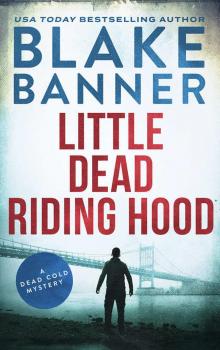 Little Dead Riding Hood: Dead Cold Mystery 13
Little Dead Riding Hood: Dead Cold Mystery 13 Blood in Babylon
Blood in Babylon Powder Burn
Powder Burn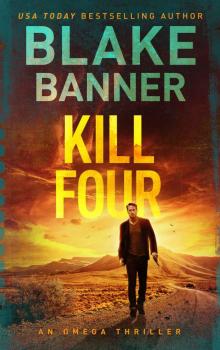 Kill Four
Kill Four Omega Series Box Set 3
Omega Series Box Set 3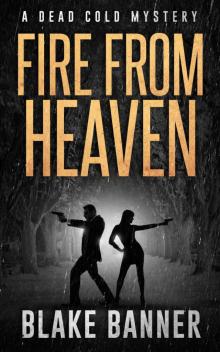 Fire From Heaven: Dead Cold Mystery 9
Fire From Heaven: Dead Cold Mystery 9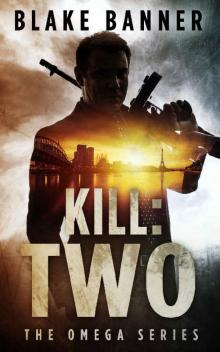 Kill - Two
Kill - Two Omega Series Box Set 1
Omega Series Box Set 1 The Butcher of Whitechapel
The Butcher of Whitechapel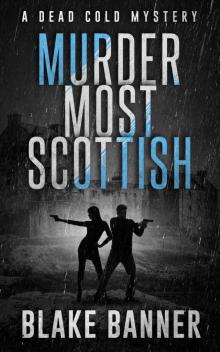 Murder Most Scottish
Murder Most Scottish Dead Cold Mystery Box Set 3
Dead Cold Mystery Box Set 3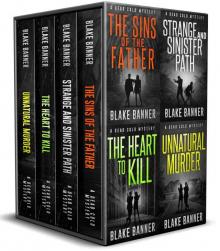 Dead Cold Mysteries Books 5-8
Dead Cold Mysteries Books 5-8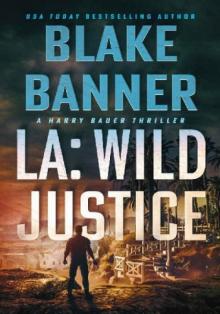 LA
LA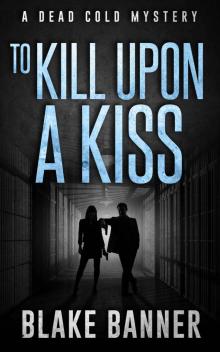 To Kill Upon A Kiss: Dead Cold Mystery 10
To Kill Upon A Kiss: Dead Cold Mystery 10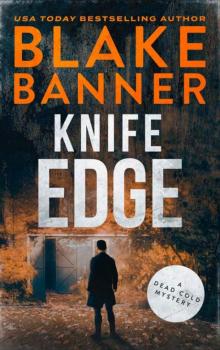 Knife Edge (A Dead Cold Mystery Book 27)
Knife Edge (A Dead Cold Mystery Book 27)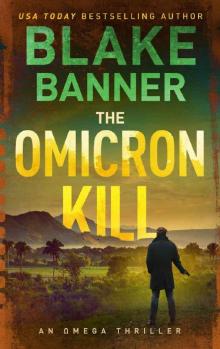 The Omicron Kill - An Omega Thriller (Omega Series Book 11)
The Omicron Kill - An Omega Thriller (Omega Series Book 11) Immortal Hate (Harry Bauer Book 5)
Immortal Hate (Harry Bauer Book 5)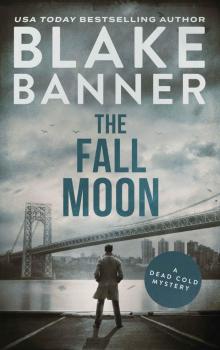 The Fall Moon
The Fall Moon Jack in the Box
Jack in the Box Dead Cold Mystery Box Set 2
Dead Cold Mystery Box Set 2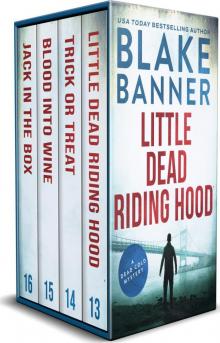 Dead Cold Mystery Box Set 4
Dead Cold Mystery Box Set 4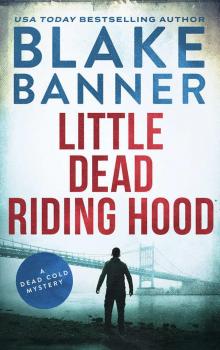 Little Dead Riding Hood
Little Dead Riding Hood Gardened of the Damned
Gardened of the Damned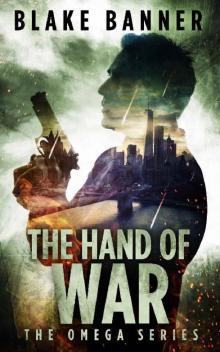 The Hand of War
The Hand of War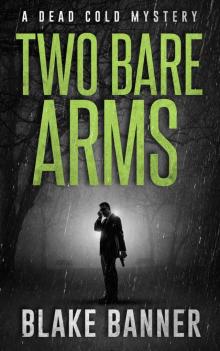 Two Bare Arms
Two Bare Arms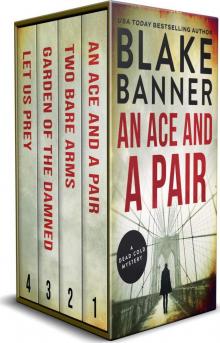 Dead Cold Mystery Box Set 1
Dead Cold Mystery Box Set 1 To Kill Upon A Kiss
To Kill Upon A Kiss Breath of Hell (Harry Bauer Book 8)
Breath of Hell (Harry Bauer Book 8)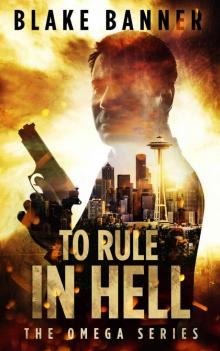 To Rule in Hell
To Rule in Hell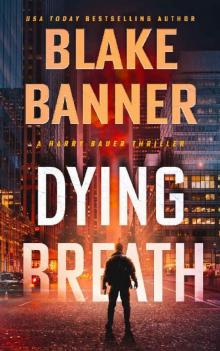 Dying Breath (Cobra Book 2)
Dying Breath (Cobra Book 2)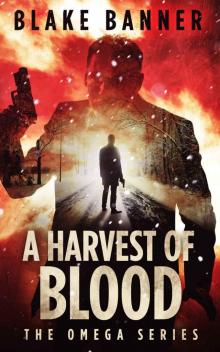 A Harvest of Blood - An Action Thriller Novel (Omega Series Book 5)
A Harvest of Blood - An Action Thriller Novel (Omega Series Book 5)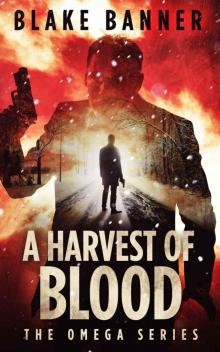 A Harvest of Blood - An Action Thriller Novel
A Harvest of Blood - An Action Thriller Novel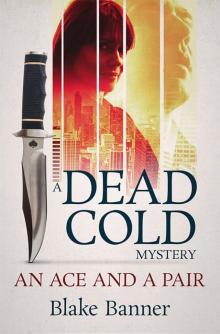 Ace and A Pair: A Dead Cold Mystery (Dead Cold Mysteries Book 1)
Ace and A Pair: A Dead Cold Mystery (Dead Cold Mysteries Book 1) Omega Series Box Set 3: Books 8-10
Omega Series Box Set 3: Books 8-10 Kill One_An Action Thriller Novel
Kill One_An Action Thriller Novel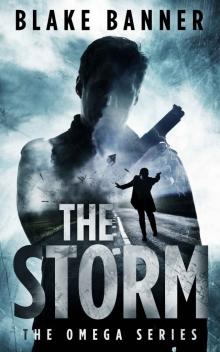 The Storm
The Storm Double Edged Blade
Double Edged Blade Kill: One - An Action Thriller Novel (Omega Series Book 7)
Kill: One - An Action Thriller Novel (Omega Series Book 7)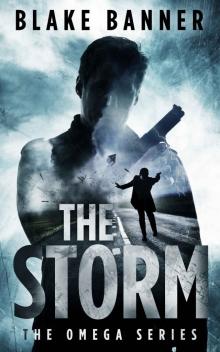 The Storm - An Action Thriller Novel (Omega Series Book 3)
The Storm - An Action Thriller Novel (Omega Series Book 3) Double Edged Blade - An Action Thriller Novel (Omega Series Book 2)
Double Edged Blade - An Action Thriller Novel (Omega Series Book 2) Dawn of the Hunter
Dawn of the Hunter Dawn of the Hunter - An Action Thriller Novel (Omega Series Book 1)
Dawn of the Hunter - An Action Thriller Novel (Omega Series Book 1)